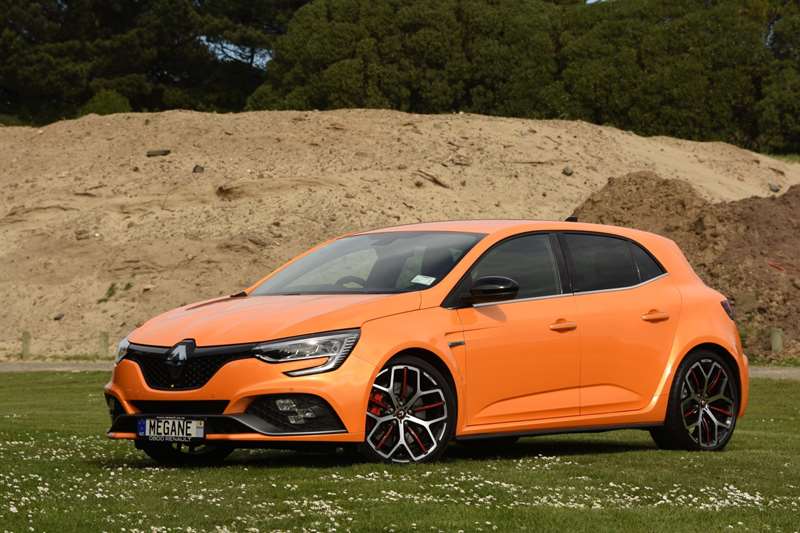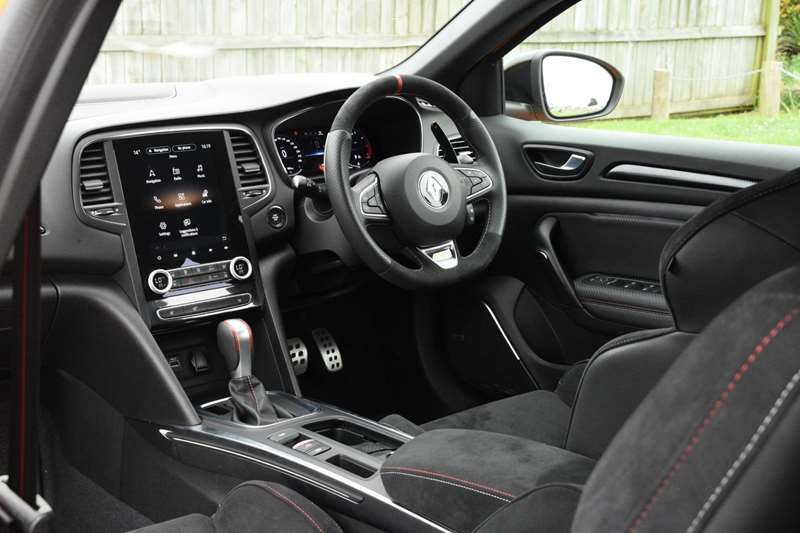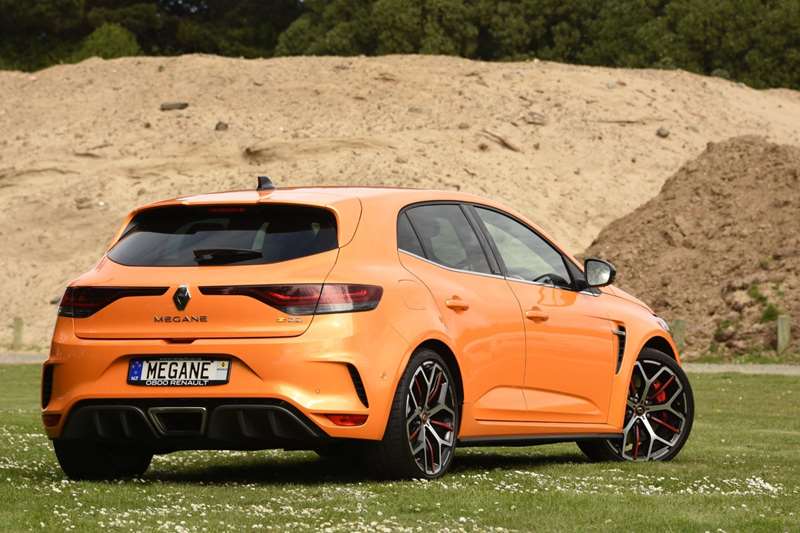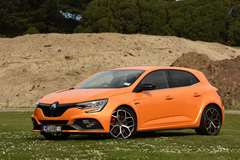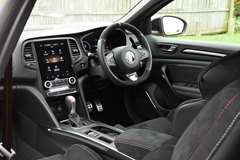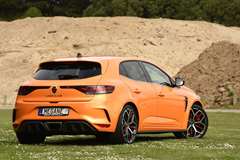David Thomson takes Renault’s Megane RS Trophy 300 hot hatch for a drive and returns impressed.
What’s new?
In the arena of high-performance front-drive hot hatchbacks, there’s nothing hotter right now than the current (and recently refreshed) Renault Megane RS.
That point was aptly made back in 2019 when Renault’s finest set a new front-drive lap record around Germany’s daunting Nurburgring racetrack. Stopping the clocks at 7min 40.10sec, a factory-prepared Megane RS Trophy-R broke the previous 2017 record set by Honda’s Civic Type-R, which had in turn bested the 2016 benchmark time of the VW Golf GTI Clubsport S.
Volkswagen will doubtless target Renault’s current Nurburgring record with a special edition of the new eighth-generation Golf GTI, Honda will do the same with its next Type-R, and the likes of Hyundai with its new i30N will be in the hunt for glory too. But in the meantime, on this highly regarded measure, the Megane rules the roost.
To be fair, the subject of this Drivesouth test — the Megane RS Trophy 300 — dials back the insanity a notch from the Trophy-R; the latter is very much a track-focused car, featuring a stripped-out semi-race car interior, carbon fibre wheels and a raft of bespoke suspension and aerodynamic tweaks.
Still, with the same 221kW 1.8-litre turbo engine nestled under the bonnet, and plenty of other high-performance enhancements, the Megane RS Trophy 300 is a true hot hatch.
The enhancements, which you won’t see at a glance, include a completely unique bodyshell (required in part to accommodate the RS’ wider-than-standard track) sports-tuned suspension, a limited slip differential and rear-wheel steering. Very clearly then, while the RS Trophy 300 is designed to be rapid in a straight line, it’s also engineered to be quick through twists and turns.
Both manual and dual-clutch automatic transmissions are offered, the latter equipped with paddle shift controls. The manual opens at $65,990. The auto carries a $3000 premium, but delivers more torque (420Nm rather than 400Nm) and superior fuel economy, while matching the manual’s 5.7-second 0-100kmh time and (artificially limited) 255kmh top speed.
The automatic version was supplied for appraisal and if, before moving on, you are wondering what the 300 in the car’s name refers to, it is horsepower — 221kW equates to 300bhp.
What does it look like?
I have always associated vibrant hues of yellow with high-performance Renaults, but the signature expression for the RS Trophy 300 is the Tonic Orange finish of the test car. It’s eye-catching in any conditions and shimmers eerily in certain lights.
Otherwise visually restrained compared with the likes of a Civic Type-R, the RS Trophy 300 still manages to look every inch a sporting machine. It squats aggressively on its wide track, and 19-inch alloys shod with 245/35 high-performance tyres. Red Brembo brake calipers are neatly nestled within the front wheels, and there is a lot of clever sports detailing in the channelling of airflow around the nose and tail of the vehicle.
The rear wing is a low-key item and subtle RS and Renault Sport badging adorn the rear and flanks respectively. The RS badge features below the Renault diamond on the nose too, along with the world ‘‘Trophy’’ emblazoned on the front diffuser.
What’s it like inside?
The cabin successfully mixes a sense of sporting occasion with everyday practicality.
Boot capacity is a respectable 434 litres, expanding to 1247 litres when the rear seats are folded down. Rear legroom is not a strength of the Megane, though head and shoulder room in the back is reasonable.
Front seat accommodation comprises a pair of firm form-hugging sports seats, manually adjusting. The steering wheel has a great sporting look and feel to it too.
Housed within a larger gloss-finish pane, the centre touchscreen features a wonderfully clear display, augmenting the fully digital main instrument cluster. The audio controls are slightly awkwardly placed on a separate stalk behind the steering wheel but on the whole there is a commendable lack of button clutter.
The vehicle’s five drive modes are called up by pressing a small button behind the gear lever, but the main selection is via the touchscreen.
Dual USB, 12-volt and AUX cables are provided in the small tray at the base of the centre console, but I stuck with the excellent wireless connectivity on test.
What comes as standard?
Keyless entry and start, satellite navigation, dual zone climate control, heated front seats and premium Bose sound system are standard, as are auto wipers and full LED exterior lights. Very much a car to be driven, the RS Trophy 300 does not play an expansive hand in terms of active safety features: cruise control is nonadaptive; there are tyre-pressure monitors, parking sensors and a rear-view camera.
What’s it like to drive?
Above all else, a memorable hot hatch must be entertaining to drive, and in this regard the RS Trophy 300 is on the money. Press the start button, and even in its most restrained drive mode, the engine comes to life with a burble that is as apparent from outside the car as within.
Round-town motoring is reasonably civilised, but those wide front tyres tend to scrub when the steering is on full lock. Ride quality is undeniably firm and a light touch on the throttle is needed in damp conditions.
Moving beyond city limits and the obvious bugbear is the amount of road noise generated as the RS Trophy 300’s standard-fit Bridgestone high-performance tyres traverse this country’s coarse chip tarmac. That state, and the fitment of old-school rather than contemporary adaptive radar cruise control, takes the gloss off the vehicle as a long-distance highway cruiser.
These flaws are forgiven though after a decent run down a winding tarmac back road, ideally conducted with the drive mode set to sport in order to sharpen the vehicle’s mechanical and dynamic responses, and add crackle-and-pop to the exhaust note.
I engaged the test car’s special launch mode once, to ascertain the veracity of the vehicle’s 5.7-second 0-100kmh performance. Simple to engage, and highly effective in putting maximum power to the road from rest, launch mode did what was required and that 5.7-second time seems about right. One might also imagine that on a closed road (or better still a track) the RS Trophy 300 will reach its 255kmh maximum speed with relative ease.
Returning to life within the confines of the law, the test car accelerated strongly in the gears, albeit with the occasional hint of initial turbo-lag. Outputs of 221kW and 420Nm are pushing the upper limit of what is sensible to deliver to the road via the front wheels, and in this regard the limited slip differential plays an important role in keeping things manageable under full throttle.
The gearbox is pretty good when left to its own devices, but this is a hot hatch, and those paddle shifts are there for a reason. So why wouldn’t you use them?
Possessed of well-weighted and very precise helm, the test car was wonderfully agile through slow, moderate and high-speed bends, albeit with a tendency — inevitable with so much power and those wide front tyres — to torque-steer a little and track to camber and surface changes. Once the car is settled into a bend, adjustability on the throttle is outstanding.
Some time is needed to adapt to the rear-steering effect, as it delivers an appreciably quicker initial turn-in to bends than a conventional steering set-up. This can be unnerving at first, especially through a rapid sequence of bends, but once mastered, it is one of the joys of the car.
Lateral grip is first rate and would have been even better with new front tyres; the test car had already covered some 5000km in the hands of keen motoring writers before it came to Drivesouth, leaving the tyre side walls a little worn.
Verdict
Within this decade, hot hatchbacks as we have come to know and love them will surely become casualties of the move to electrified motoring. In the meantime, and as exemplified by the Megane RS Trophy 300, they are an absolute hoot.
